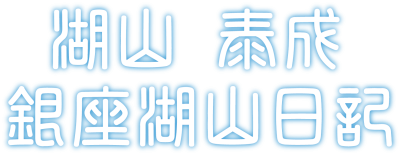The day I flew to Kesennuma

3.13 took off from the airport in Saitama to the facility in Kesennuma city.
With 3 helicopters.
Loaded with food, such as chocolate.
It was made like a goldfish bowl, and the whole thing was made of glass, so I could see down to my feet.
I felt like I was flying in the sky, all alone in my chair.
It was scary.
Since then, even now, helicopters are too scary to ride.
2 hours and 30 minutes by helicopter to Kesennuma city.
I could see the smoke from the nuclear power plant below.
I could also see things being carried by the waves to the shore.
What I thought were trees later turned out to be people.
Anyway, I aimed for Tohoku region with tension, fear and a sense of mission.
We made a forced landing in the parking lot of the Kesennuma facility.
When I entered the dark facility lobby due to the power outage, there were many women in traditional Japanese clothes.
Citizens left their family members in the facility.
I’m going to look for another family, so I want you to keep it.
Futons are laid out in the lobby and day space.
It’s cold inside the facility, so first of all, I had a cardboard paper pulled under the futon.
The office’s emergency power supply was lined with rice cookers and water heaters.
All of us had a rice ball and a bowl of miso soup.
senior citizens and staff.
The staff cannot go home at all.
I was worried about my family’s safety.
In fact, it took nearly two weeks to confirm the safety of all employees.
Furthermore, the first task of reconstruction was to build a staff dormitory.
Many employees’ homes were completely destroyed.
At any rate, the elderly people in the area fled to the facilities at that time.
In facilities with blackouts and water outages, toilets and elevators cannot be used.
It wasn’t a place to eat.
In a blackout, the northern winter cannot survive.
In fact, at a nursing home by the sea, up to the second floor was submerged, but everyone escaped to the roof and survived.
But I heard that many elderly people lost their lives in the snow the next morning.
A helicopter flew to the airport to buy gasoline fuel, but it never returned.
I found out later, but since it was a private company, they didn’t sell me gasoline fuel.
From the beginning, it was a one-way trip.
I intended to go to the rescue, but I was in distress.
Neither my parents nor the staff knew that I had flown to Kesennuma.
Based on that experience, I have since installed a satellite phone in the facility.
In this case, the number of victims who have difficulty returning home, like me, has increased.
But at dusk, the wagon arrived at the facility at full speed.
A relief team had arrived from a hospital in Yamagata.
We were both surprised.
The other person must have been surprised.
You must have thought I was a ghost.
2 hours and 30 minutes on the way.
On the way home, I was allowed to ride with the wagon of the rescue team, and after two days, I was able to return to Tokyo safely.
A rescuer from Yamagata sent me to Fukushima, and from Fukushima to Tokyo, I had an ambulance from Shizuoka send me.
On the way back, it was like a courier package.
I was all rescued by Koyama G’s rescue teams from all over the country.
All of Koyama G’s corporations voluntarily dispatched relief vehicles to the Tohoku region without any kind of coordination or instructions from me.
from all over the country.
Yamagata’s team says it started working two hours after the quake.
I went to save Koyama and was saved by Koyama.
How many times have I been moved by the passion and actions of my friends at that time?
He was convinced he had a purpose in founding Thunderbird.
To help others, help yourself.
Voluntary action is still the pride of Koyama G.
Pulse oximeter 98/97/97
Body temperature 36.5 Blood sugar 150
Hospital Ship Departure
CEO Yasunari Koyama
